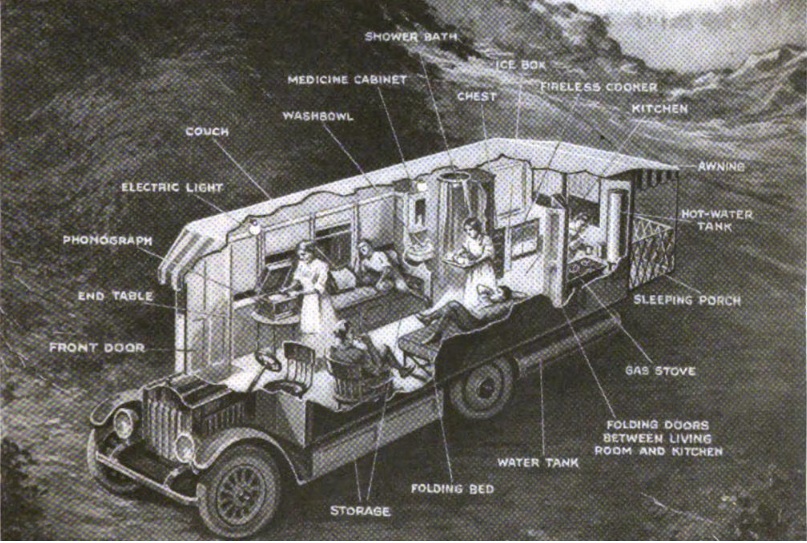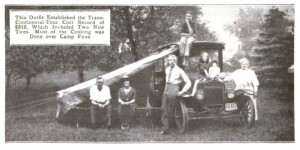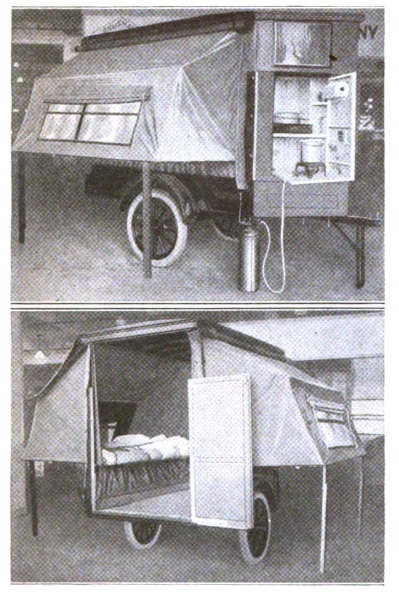 This early proto-recreational vehicle was shown a hundred years ago in the March 1921 issue of Popular Mechanics. The magazine notes that this vehicle, called an “auto-bungalow” was “the culmination of a movement which had been growing ever since the motor car became a reliable means of transportation. It ancestor was the two-wheeled homemade camp trailer, designed to carry the tents, bedding, and other simple requisites of a two-weeks period of “roughing it” in the woods or at the shore.”
This early proto-recreational vehicle was shown a hundred years ago in the March 1921 issue of Popular Mechanics. The magazine notes that this vehicle, called an “auto-bungalow” was “the culmination of a movement which had been growing ever since the motor car became a reliable means of transportation. It ancestor was the two-wheeled homemade camp trailer, designed to carry the tents, bedding, and other simple requisites of a two-weeks period of “roughing it” in the woods or at the shore.”
The early RV shown above was not cheap. According to the magazine, the total cost was $16,000. According to this inflation calculator, that would work out to almost a quarter million in today’s money, a figure that’s not surprising, since many top-end RV’s are available today in that price range. The vehicle, including the rear porch, had an overall length of 30 feet. As is apparent, it required an abnormally long overhang at the rear, but the magazine pointed out that this was an advantage, since it put most of the weight on the rear axle, providing better traction and making steering easier. The interior living quarters measured a respectable 8 by 20 feet, which included a kitchenette with ice box, stove, hot water tank, and fireless cooker. It included toilet facilities and 22 incandescent lights powered by battery and generator.
As is the case today, not everyone could afford such a top-of-the-line luxury RV, and the magazine pointed out a number of options for the more budget conscious. For example, the “20th century prairie schooner” shown at left was constructed at reasonable cost by a Kansas City resident. It was built on the chassis of a popular make of light car, with the wheelbase extended several inches. The even simpler equipment shown to the right  was designed by a Maine resident at a total cost of $312, including two new tires. This family of six cooked most of their meals on campfires.
was designed by a Maine resident at a total cost of $312, including two new tires. This family of six cooked most of their meals on campfires.

Modern tent trailer for motorcycle or small car. Amazon photo.
The tent trailer shown below is similar in concept to some modern motorcycle camping trailers. According to the magazine, a number of such trailers, with either two or four wheels, were readily available for purchase, for the benefit of those with “neither the leisure nor the ingenuity to originate and build outfits.”


